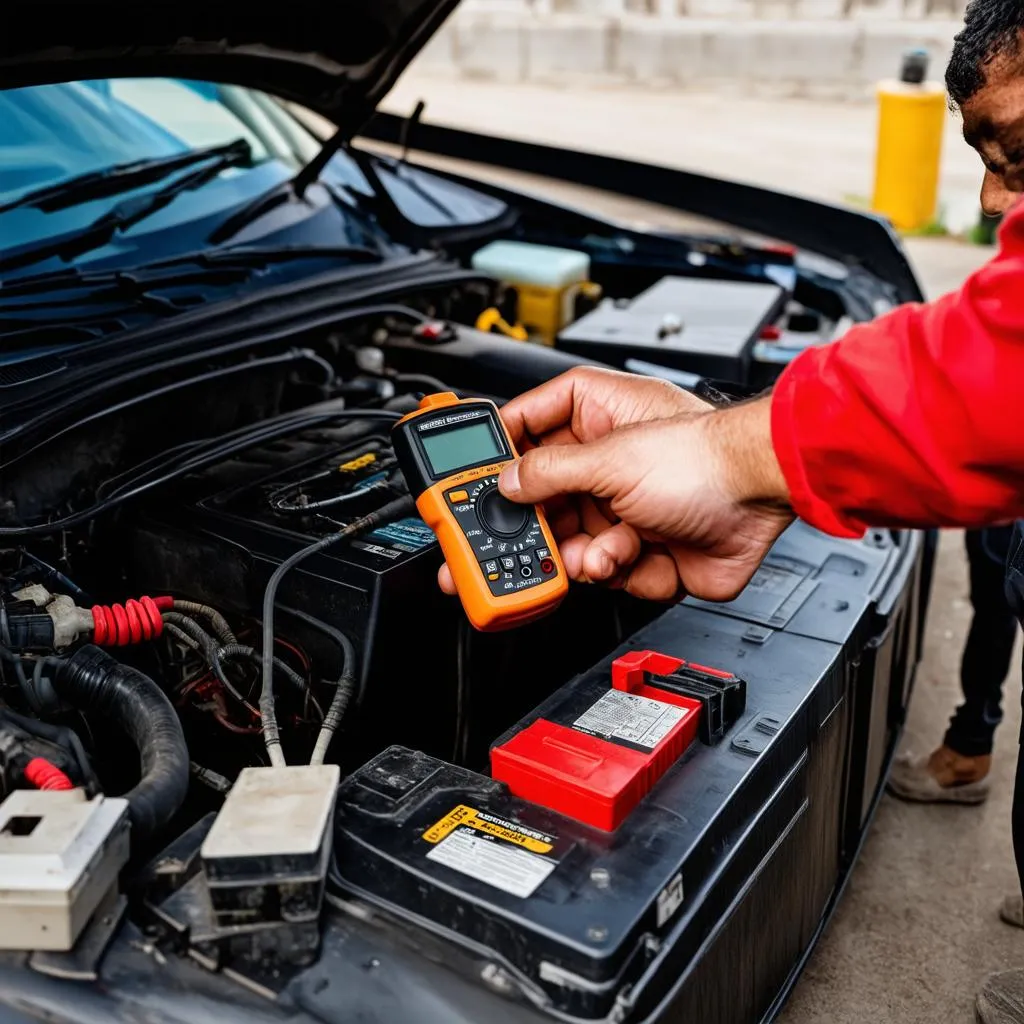Have you ever walked out to your car on a chilly morning, turned the key, and been met with… nothing? Just the groan of a tired starter or worse, complete silence? We’ve all been there. That, my friends, is the dreaded “no start” situation. It’s frustrating, inconvenient, and can leave you feeling stranded.
Whether you drive a German powerhouse like a BMW or a Japanese icon like a Toyota, a no-start situation can strike anytime. But before you call the tow truck, let’s dive into some no-start troubleshooting tips that might just get you back on the road.
Understanding the Dreaded “No Start”
The term “no start” is pretty self-explanatory – your car simply won’t start. But understanding what it means from a mechanic’s perspective and why it happens is key to diagnosing the issue.
The Mechanic’s Perspective: To a seasoned mechanic, “no start” signifies a breakdown in one or more of the essential systems required for engine starting:
- Battery: A dead battery is often the culprit.
- Starter: This component is responsible for cranking the engine.
- Alternator: The alternator keeps your battery charged while you drive. If it fails, the battery won’t get the juice it needs to start your car.
- Fuel System: From the fuel pump to the injectors, any blockage or malfunction in this system can prevent fuel from reaching the engine.
- Ignition System: The spark plugs, ignition coils, and their associated wiring are crucial for igniting the air-fuel mixture in the cylinders.
- Electrical System: A faulty sensor, wiring issue, or problem with the car’s computer (ECU) can also cause a no-start.
The Economic Angle: A no-start situation isn’t just an inconvenience; it can quickly become a financial headache. A tow truck, diagnostic tests, and repairs can add up, making it crucial to identify and address the issue promptly.
Troubleshooting Your No-Start Condition: A Step-by-Step Guide
While it’s tempting to jump to conclusions, the key to fixing a no-start is a systematic approach:
1. Check the Obvious:
- Battery: Begin with the basics. Is your battery terminal loose or corroded? A simple cleaning with a wire brush might do the trick. Remember, even a new battery can drain if you leave your lights on!
- Starter: Do you hear a clicking sound when you turn the key? This could indicate a failing starter motor.
- Fuel Gauge: We’ve all been there— forgetting to fill up. Ensure you have enough fuel in the tank.
2. Listen Carefully: The sounds your car makes (or doesn’t make) when you try to start it are crucial clues.
- Clicking Sound: Often indicates a weak battery or a problem with the starter.
- Rapid Clicking: Might mean your battery is completely drained.
- Grinding Sound: Could signal a faulty starter motor.
- Engine Cranks but Won’t Start: Points towards issues with the fuel system, ignition system, or a sensor problem.
3. Investigate Further: If the basic checks don’t reveal the culprit, it’s time to delve deeper:
- Check for Spark: A spark tester can determine if your spark plugs are firing.
- Inspect Fuel Delivery: See if fuel is reaching the engine by checking the fuel pressure.
- Scan for Codes: Modern cars have onboard computers (ECUs) that store diagnostic trouble codes (DTCs). A diagnostic scanner, like those used by professionals, can read these codes and provide valuable insights into the problem.
Common No-Start Questions and Answers
Q: Can a bad alternator cause a no-start?
A: Absolutely. While the alternator’s primary job is to charge the battery while the engine is running, a faulty alternator can prevent the battery from receiving a charge in the first place, leading to a no-start condition.
Q: My car was running fine yesterday, but now it won’t start. What could be wrong?
A: This scenario suggests a sudden failure, such as a dead battery, a broken alternator belt, or a failed fuel pump.
Q: I’m getting a spark and fuel, but the engine still won’t start. What else could it be?
A: If you’ve ruled out the most common culprits, it’s time to consider sensor issues (crankshaft position sensor, camshaft position sensor), timing belt problems, or even a faulty ECU.
Need More Help? We’re Here for You!
Troubleshooting a no-start situation can be challenging, but often, a few simple checks can save you time and money. However, if you’re uncomfortable working on your car or suspect a more complex issue, seeking professional help is always the wisest course of action.
For expert assistance with no-start troubleshooting or any automotive diagnostic needs, contact us on Whatsapp at +84767531508. Our team of experienced technicians is available 24/7 to provide guidance and support.
Keep Exploring:
We hope this guide has equipped you with the knowledge to tackle your next no-start experience. Remember, a little automotive know-how goes a long way!


